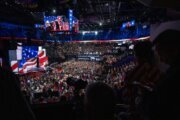When it comes to bond investing, investors can push and pull on two levers to adjust their desired level of risk and return.
First up is duration, which measures the time it takes for a bond’s cash flows, like interest payments, to repay the investor. In general, shorter-term bonds are less sensitive to interest rate changes, while longer-term bonds have greater sensitivity but usually offer higher interest rates.
Investors can also vary the credit quality of their bonds. “The bond that you’re buying represents the creditworthiness of whomever you’re lending that money to,” says Michael Wagner, co-founder and chief operating officer at Omnia Family Wealth. “For example, the U.S. government would be very creditworthy and come with relatively low risk, but also low return.”
For instance, U.S. Treasurys have a historically low risk of default, but tend to pay lower yields than investment-grade bonds issued by companies, called corporate bonds. Moving farther down the credit quality spectrum, investors will eventually arrive at high-yield bonds, also known as “junk” bonds.
“A high-yield bond is a corporate bond with credit ratings below BBB from two out of three recognized credit-rating agencies such as Moody’s, S&P and Fitch,” says Evan Mann, senior high-yield analyst at Gimme Credit, an independent corporate bond research firm.
[Sign up for stock news with our Invested newsletter.]
These bonds are assessed to have a much higher risk of default, which means there is a greater probability that an investor will not receive their owed periodic interest payments or even principal back if the issuing company goes bankrupt.
“A high-yield bond is like making a loan to a company that might have more risk — the risk that you’re not going to be paid back at all,” Wagner says.
However, junk bonds do pay a much greater yield to compensate for the increased risk. “The benefits for high-yield bonds are they pay a higher level of interest income than does an investment-grade or Treasury bond, while the biggest risk is credit risk in the form of a possible default that leads to a loss of principal,” Mann says.
Given these risks, investing in individual high-yield bond issues can be difficult given the extensive and often complicated credit risk analysis required. Professionally managed high-yield bond mutual funds and exchange-traded funds, or ETFs, are a viable alternative.
“Given that high-yield bonds carry a much higher level of credit risk than investment-grade bonds, diversification is very important,” Mann says. “Investing through a mutual fund or ETF can provide that level of diversification.”
Wagner agrees, noting: “I think retail investors should generally access high-yield bonds through a pooled investment vehicle like a mutual fund or ETF. It’s very difficult for a regular retail investor to analyze the high-yield bond market, and you really have to do a lot of due diligence and credit risk analysis on these companies as if you were a bank making a loan to them.”
Here are seven of the best high-yield bond funds to buy now:
| Bond Fund | Expense ratio |
| iShares iBoxx $ High Yield Corporate Bond ETF (ticker: HYG) | 0.49% |
| iShares 0-5 Year High Yield Corporate Bond ETF (SHYG) | 0.3% |
| Vanguard High-Yield Corporate Fund Investor Shares (VWEHX) | 0.23% |
| SPDR Bloomberg High Yield Bond ETF (JNK) | 0.4% |
| Schwab High Yield Bond ETF (SCYB) | 0.03% |
| VanEck Fallen Angel High Yield Bond ETF (ANGL) | 0.35% |
| SPDR Blackstone Senior Loan ETF (SRLN) | 0.7% |
iShares iBoxx $ High Yield Corporate Bond ETF (HYG)
“When you think about a company’s capital structure, shareholders take the first losses, making that the riskiest position,” Wagner says. “High-yield bond holders could get equity-like returns, but if the company goes belly up, you actually have a claim against the liquidation value.” This protection is amplified further for investors who buy a diversified high-yield bond ETF like HYG.
HYG tracks the Markit iBoxx USD Liquid High Yield Index, which screens its holdings for above-average liquidity. Case in point: HYG currently has a 30-day median bid-ask spread of just 0.01%, which minimizes implicit costs for buyers and sellers. With around $12 billion in assets under management, or AUM, this ETF is one of the most popular high-yield funds in operation. The ETF charges a 0.49% expense ratio.
Yield to maturity: 9.3%
iShares 0-5 Year High Yield Corporate Bond ETF (SHYG)
Investors looking to reduce duration further to mitigate interest rate risk can consider SHYG as the short-maturity counterpart to HYG. By tracking the Markit iBoxx USD Liquid High Yield 0-5 Index, SHYG keeps its average duration low at 2.6 years. All else being equal, a 100-basis-point increase in rates will only cause SHYG to lose around 2.6% in value.
That being said, the ETF isn’t a slouch when it comes to income despite its short-term nature. At present, SHYG is paying an average yield to maturity, or YTM, of 9.3%, which is the theoretical return an investor can expect should all of the ETF’s underlying bonds be held until maturity. The ETF also comes in slightly cheaper than HYG, with a 0.3% expense ratio.
Yield to maturity: 9.3%
Vanguard High-Yield Corporate Fund Investor Shares (VWEHX)
For even greater savings, investors can opt for a high-yield bond mutual fund like VWEHX, which charges a lower 0.23% expense ratio. This fund employs extensive credit screening to ensure that the high-yield junk bonds it holds are, on average, rated higher to further minimize the risk of default. That being said, Vanguard still considers this ETF to have volatility comparable to that of an equity fund.
Currently, VWEHX’s portfolio consists of more than 800 high-yield bonds with an average YTM of 7.8% and duration of 3.7 years. However, keep in mind that this fund may not be very tax-efficient due to its high portfolio turnover rate of 36.1%. In addition, VWEHX imposes a $3,000 minimum initial required investment, whereas ETFs can be purchased for the price of a single share.
Yield to maturity: 7.8%
[SEE: 7 Best ETFs to Invest in Corporate Bonds]
SPDR Bloomberg High Yield Bond ETF (JNK)
Investors looking for a viable tax-loss harvesting partner for HYG can consider JNK, which passively tracks the Bloomberg High Yield Very Liquid Index. Because it uses a different index, but has similar objectives and underlying holdings, investors can potentially swap HYG and JNK out without running afoul of the IRS’s wash-sale rule. It also charges a similar expense ratio of 0.4%.
JNK’s index is designed to ensure exposure to high-yield bonds with above-average liquidity, which is an important consideration given that some high-yield bonds aren’t traded much. Right now, investors in JNK can expect an average duration of 3.7 years and a 9.5% YTM, along with monthly distributions. The ETF is also fairly popular, with around $5.5 billion in AUM at present.
Yield to maturity: 9.5%
Schwab High Yield Bond ETF (SCYB)
Asset management firm Charles Schwab disrupted the high-yield bond ETF competition in July when it launched SCYB. This ETF tracks the ICE BofA U.S. Cash Pay High Yield Constrained Index for a 0.03% expense ratio, representing considerably lower fees than what the more popular HYG charges. On a $10,000 investment, this works out to $3 in annual fees.
As a new ETF, portfolio metrics for duration and YTM are not yet available for SCYB on the ETF’s homepage. So far, SCYB has attracted around $56 million in AUM, which makes it much smaller than the previous ETFs but is still a good pace of growth for a newly launched ETF. Investors looking to buy SCYB may wish to wait until the ETF accrues more inflows to lower the risk of it shutting down.
Yield to maturity: N/A
VanEck Fallen Angel High Yield Bond ETF (ANGL)
Not all high-yield bonds are issued as such. Some are actually the remnants of formerly investment-grade bonds, called “fallen angels.” When a company gets downgraded by one of the various rating agencies due to various financial challenges, such as mounting debt, missed bond payments or weakening fundamentals, its previously issued bond may lose its investment-grade rating and descend into junk status.
That being said, investing in fallen-angel high-yield bonds can provide a potentially high upside should those companies recover and recapture their investment-grade rating. To quickly identify these bonds, consider an ETF like ANGL, which tracks the ICE U.S. Fallen Angel High Yield 10% Constrained Index. The ETF charges a 0.35% expense ratio and pays a 8.5% YTM.
Yield to maturity: 8.5%
SPDR Blackstone Senior Loan ETF (SRLN)
Senior loans, often known as bank loans or leveraged loans, occupy a privileged position in a company’s capital structure. Should a company face liquidation or bankruptcy, holders of senior loans are prioritized for repayment. If this occurs, debts secured by specific assets or collateral, such as senior loans, are settled before other unsecured debts like corporate bonds.
Another trait of senior loans is their tendency to be floating-rate, meaning that the interest they pay adjusts periodically based on prevailing market rates, which can be beneficial for investors in a rising interest rate environment. For access to senior loans, SPDR offers SRLN, which is currently paying a 30-day SEC yield of 9.2%. However, keep in mind that this ETF charges a higher 0.7% expense ratio.
30-day SEC yield: 9.2%
More from U.S. News
Corporate Bonds: Definition and How to Invest
10 Highest Dividend-Paying Stocks in the S&P 500
7 of the Best High-Yield Bond Funds originally appeared on usnews.com
Update 10/20/23: This story was previously published at an earlier date and has been updated with new information.







